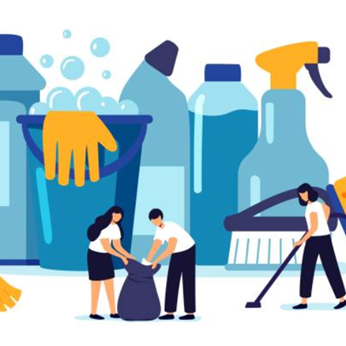Know About Urinary Incontinence

It was just the other day that we were talking about urinary incontinence that affects the elderly; occurring due to the involuntary contraction and relaxing of the bladder muscles. This problem signified by the inability to control the release of urine from the bladder affects nearly 10 out of 100 elders over the age of 65. Ranging from mild occasional leaking to chronic uncontrolled urination it could be temporary occur due to UTI, vaginal infection, constipation or certain medications or permanent.
There are various types of urinary incontinence. They are:
Stress incontinence: This type of urinary incontinence occurs when there is an unexpected leakage of urine that occurs due to pressure or sudden muscle contraction in the bladder. This sort of incontinence occurs more in women who are young or middle-aged during exercise, coughing, sneezing or even laughing. While stress incontinence occurs in younger women due to inherent weakness of the pelvic walls or as an effect of stress of childbirth, it occurs in middle-aged women nearing menopause.
Urge incontinence: Also known as overactive bladder, this type of incontinence occurs when a person feels the urge to urinate, but is unable to hold back the urine long enough to get to the bathroom. This form of urinary continence is more common in people that have had a stroke and suffer from chronic diseases like Alzheimer’s disease, Parkinson’s disease, multiple sclerosis and diabetes. It is significant to understand that urge incontinence could also be an early sign of bladder cancer.
Overflow incontinence: This type of urinary incontinence occurs when there is chronic bladder outflow obstruction and the person is unable to empty his bladder completely and it overflows with the new urine produced. In this type you are unable to completely empty the bladder and later dribble. Overflow incontinence also known as a neurogenic bladder occurs more commonly in elderly men who suffer from an enlarged prostrate. It is also common to find it in those who have suffered diabetes or spinal cord injuries. Early assessment and intervention is necessary in this type of urinary incontinence.
Functional incontinence: This type of urinary incontinence has more to do with the person’s inability to reach the bathroom that is due to poor mobility or unfamiliar surroundings rather than a disorder of the bladder. Found to be more common in the elderly and those with disabilities, it is found in those that have normal or near normal bladder control.
Overactive bladder syndrome (OAB): Here the urgency occurs with or without urge incontinence; occurring with frequency and nocturia. Nocturia is a condition that is more prevalent in old men and women and makes them wake up in the night due to various reasons. Overactive bladder syndrome could be 'OAB wet' or 'OAB dry', depending on whether or not the urgency is associated with incontinence. The usual cause of the problem is over activity of the detrusor.
Gross total incontinence: In this type of incontinence there is constant leaking of urine from a bladder that simply has no storage capacity or functioning. This condition usually results from an anatomical defect, a spinal cord injury, an abnormal opening in the bladder (fistula) or as an after-effect of urinary tract surgery.
I shall soon come out with more about urinary incontinence especially in the elderly.
Image Courtesy: Google
Take the next step toward your goals
Share your requirement and find the best care providers in your area
-
Looking for a caretaker’s job? Build your profile and get in touch with families in your vicinity.
-
Discover nannies, babysitters, cooks, housekeepers, pet sitters, and elder care under one roof.
-
Get all the support you need to run a successful care center.
-
Search for appropriate centers near you depending on your needs.
Care Corner Insights: Blog Library

When do newborns start smiling? All about this lovely baby milestone
There's perhaps no moment more magical in early parenthood

Learning through play: How it helps your child's growth
As parents, we often find ourselves caught between wanting our children to have fun and ensuring they're learning and developing properly. The good news? You don't have to choose between the two. Play-based learning is one of the most powerful tools

Signs and Symptoms of Strep Throat in Children: What Parents Should Know
When your child has a sore throat, it’s easy to brush it off as “just a cold.” But sometimes, that irritation could be more than just a passing bug. Strep throat, caused by group A Streptococcus bacteria, is one of the most common throat infections i

Hindi/Tamil-Speaking Nannies in San Jose, CA: Where to Find and How to Screen
For many NRI families here, there’s a big question that keeps coming up: Where can we find a nanny who speaks Hindi or Tamil, understands our culture, and truly connects with our kids?

Trusted Babysitters Near Redmond, WA Tech Hubs: Background Checks & Hourly Rates for NRI Families!
The hum of laptops, endless Zoom calls, and the rush of deadlines — welcome to life in Redmond’s buzzing tech hubs. For many NRI families working at Microsoft, Amazon, and startups around the Eastside, there’s one silent question always hanging in th

Back-to-School Tips: A Simple Guide for Parents to Make the Transition Easier
The sound of zipping backpacks, the rush for last-minute school supplies, and the quiet gulp of “summer’s over” — yes, it’s back-to-school

What is Conscious Discipline? How Parents and Caregivers Can Use It
In a world full of parenting advice, sticker charts, and timeout corners, Conscious Discipline stands out as a game-changer. It’s not just a method—it’s a mindset. And for parents and caregivers

Nanny vs. Daycare in Naperville, IL: What Works Best for Indian Working Couples?
Hey Naperville Parents! Balancing work and family life is no small feat—especially for Indian working couples trying to juggle careers, household responsibilities, and parenting. One of the biggest decisions you’ll face? Choosing between a nanny or

Housekeepers in Sugar Land, TX: Deep-Cleaning Checklists for Indian Homes
Housekeepers in Sugar Land, TX: Deep-Cleaning Checklists for Indian Homes Indian cooking = flavor + spices + love… but also oil splatters and stubborn stains. Time to reset! Degrease stovetops, chimneys, and exhaust fans. Scrub countertops, tiles,

12 Easy After-School Snack Ideas for Kids Who Get Hungry Quickly
School’s out, and the hunger hits hard! If your little ones come home ravenous and ready to raid the kitchen, you’re not alone. After-school snack time is prime time for refueling, recharging, and maybe even sneaking in a little nutrition. So here ar